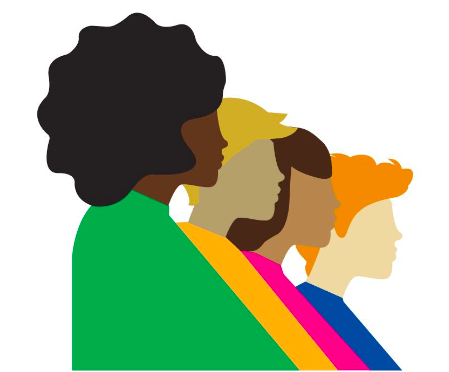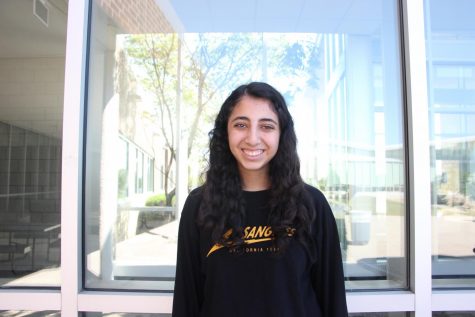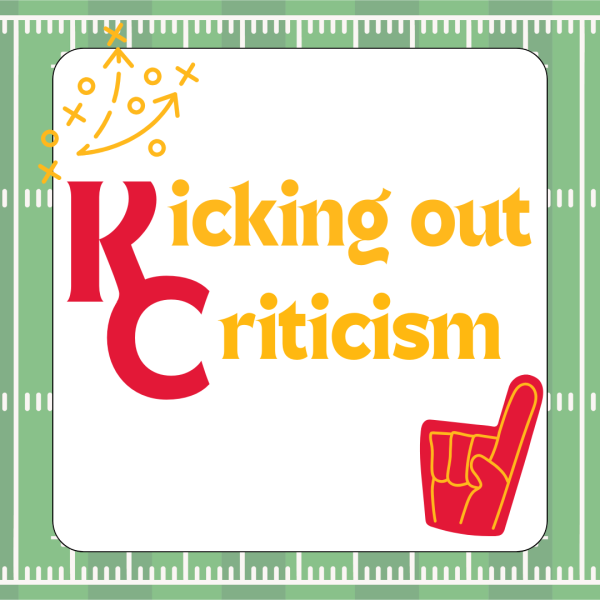More Variety, Better Society: a lack of diversity can impair one’s level of cultural awareness

When in an environment that lacks diversity, one’s level of cultural awareness is impaired.
It is no secret that the school district and Johnson County as a whole are not very densely populated in terms of minority groups. Our school in particular, with 84% of the students being white, does affect our community’s level of cultural awareness. To some, it doesn’t pose as an evident problem, but for others, it brings up the concern of our students experiencing a culture shock when they leave the Johnson County bubble due to the lack of diversity.
Cultural awareness is defined by someone’s ability to recognize the different ethnicities, races, religions and cultures that surround them. Being able to distinguish these differences within a population and reacting appropriately to those differences formulates a good sense of cultural awareness.
Most individuals jump to the idea that diversity is only defined by race and ethnicity, whereas in reality, it covers a much wider spectrum. Diversity can also be viewed through the unique perspective of socioeconomic status. In our community, most students have a similar socioeconomic status, which presents itself as another area in which we lack diversity. Junior Lexi Lindman is new to the district and said she experienced a sort of shock when exposed to our very uniform community, with most students having similar, if not the same, socioeconomic status.
“All the houses look the same, everyone wears the same thing,” Lindman said. “It was like this mold that you have to fit.”
In our cookie-cutter community, students often feel the need to reform to certain social expectations in order to blend in. This makes expressing diversity a challenge and almost impossible due to the immense amount of peer pressure that exists in high school.
Although most students share the same socioeconomic status, there are a few who do not fit into this figurative mold, which often times can create a divide between classes. Sociology teacher Jason Pendleton said only a few of our students are of a lower socioeconomic status and that impacts a community’s awareness of these kinds of issues.
“Statistics show we have 95% of our students are doing pretty well economically,” Pendleton said. “And only 5% of our student body is on what’s known as free and reduced lunch.”
Pendleton said this large imbalance in status is a good thing, but also prevents students from being aware and empathetic of other people’s lives and experiences.
For some students, like freshman Jyoshika Padmanaban, a lack of diversity does create a negative environment for the people of a minority.
“I was kind of sad at first because I knew that other schools had Bollywood dance teams,” Padmanaban said. “I kind of wanted that.”
The lack of diversity not only singles out minority groups, but can also make some students feel uncomfortable embracing their diverse backgrounds.
Pendleton said his concern is not only for the community as a whole, but for his own children as they grow up in a community where minority groups’ cultures aren’t always celebrated.
“I have a freshman here, and I want him to be able to feel comfortable socially interacting with a lot of people,” Pendleton said. “The only way to become comfortable and familiar with people is to have social experiences with them on a regular basis.”
Being able to have those interactions is difficult for students, especially when they’re only exposed to such a small percentage of minority groups. In our community, where minority groups represent less than a third of the population, people’s ability to explore and interact with other cultures is made difficult.
For most students who have grown up in the same community, there isn’t a notable reaction to the lack of diversity. For some, a lack of diversity is viewed as an opportunity to express individuality in a cultural aspect. The concern of not being culturally aware is still present, but for some students, like senior Chloe Shi, there wasn’t a negative reaction to the lack of diversity. Rather, a more positive reaction to being a part of a unique minority group.
“I didn’t really have a reaction just because I’ve always sort of gone to schools this way,” Shi said. “I appreciate it because it helps me see how I’m different from everyone else.”
Whether the reaction is positive or negative, the issue regarding a lack of cultural awareness within our community and its effect on people still arises. For minority groups, having their culture represented poorly in numbers, and not having their customs and ways of life celebrated is not only socially uncomforting, but also a negative influence on one’s self-esteem and confidence.
In a community where cultural awareness isn’t a valued aspect of living, certain false beliefs are formed around less celebrated cultures.
“[People] might talk bad about other cultures not knowing what they do,” Padmanaban said.
These stigmas are impactful on a community’s functionality and ability to accept one another despite the differences. Breaking the boundaries surrounded by these false beliefs is vital in being able to communicate with people of different cultures. Judgment and a lack of understanding creates stereotypes that become the perceived view of certain cultures. Sophomore Hamdan Tariq said a lack of cultural awareness is directly tied to the formation of these stigmas and stereotypes.
“[Some students] have stereotypes or bias that have never been rebutted,” Tariq said. “They’ve never had a one-on-one discussion or interaction with another group or demographic.”
The effect of these stereotypes is more impactful than most people perceive it to be. Stereotypes start as an opinion that can often times come from the media. It then it becomes this commonly recognized idea that everyone assumes of a culture.
When exposed to a variety of cultures, people are able to develop how to communicate with those individuals appropriately. In a community like ours, where there is no specific emphasis on that, it is difficult to lessen the culture shock that students may experience when they graduate. Ideally, the hope is that everyone is able to leave this school and continue a life somewhere else, and the chance of those that place having a higher population of minority groups is probable.
“It’s probably good to help grow,” Shi said. “It shows that people are moving on from just the Johnson County bubble.”
With a new environment comes the challenge of overcoming the culture shock that a lot of students will inevitably experience. The reaction can take a positive route in which the exposure is beneficial and comfortable, or it can take a negative route in which the reaction is confused and unaware of how to communicate with other groups.
“It might be negative if they’ve been taught to not be accepting,” Tariq said. “It might be better for them if they’re taught to be open to new ideas.”
In the end, it comes down to how much of an effort the student makes to become comfortable with interacting with different groups. When there is no strive to make those communications, students are essentially rejecting the opportunity to become culturally aware.
Our community may lack cultural diversity, but it is making an effort to spread awareness. Through participation in the annual Diversity Assembly, Culture Festival and classes like sociology, there are things that can help create a more culturally-aware community. Leaving the Johnson County bubble and making the effort to interact with different cultures will ultimately create the most effective form of awareness.
“I think people need to get out of the 15-minute radius that we live our lives in,” Lindman said. “And experience other people’s cultures.”
An effort needs to be made and change needs to happen. People can start by celebrating culture in our in school activities and clubs like the Muslim Student Association and Fellowship of Christian Athletes. Once they build a general understanding of the cultures that exist around them, it is critical that those skills are taken outside of the bubble. Whether that means driving out and communicating with culturally different individuals or visiting a local Masjid, Church or Temple.
In order to lessen the culture shock and create a more interactive community, all cultures need to be acknowledged. Cultural awareness is based on the ability to communicate with others despite socioeconomic or racial differences. At the end of the day, we are all human and we may not share the same beliefs or have similar lifestyles, but that should not matter.
“You’re going to have to purposefully put yourself in situations to interact with people who are economically, culturally, racially [and] ethnically different than yourselves,” Pendleton said. “Get to know them as individuals so that you can have a better perception and evaluate people based upon how they interact with you as opposed to your preconceived ideas about them.”







